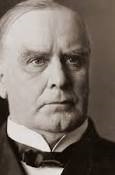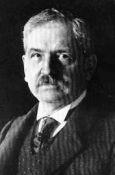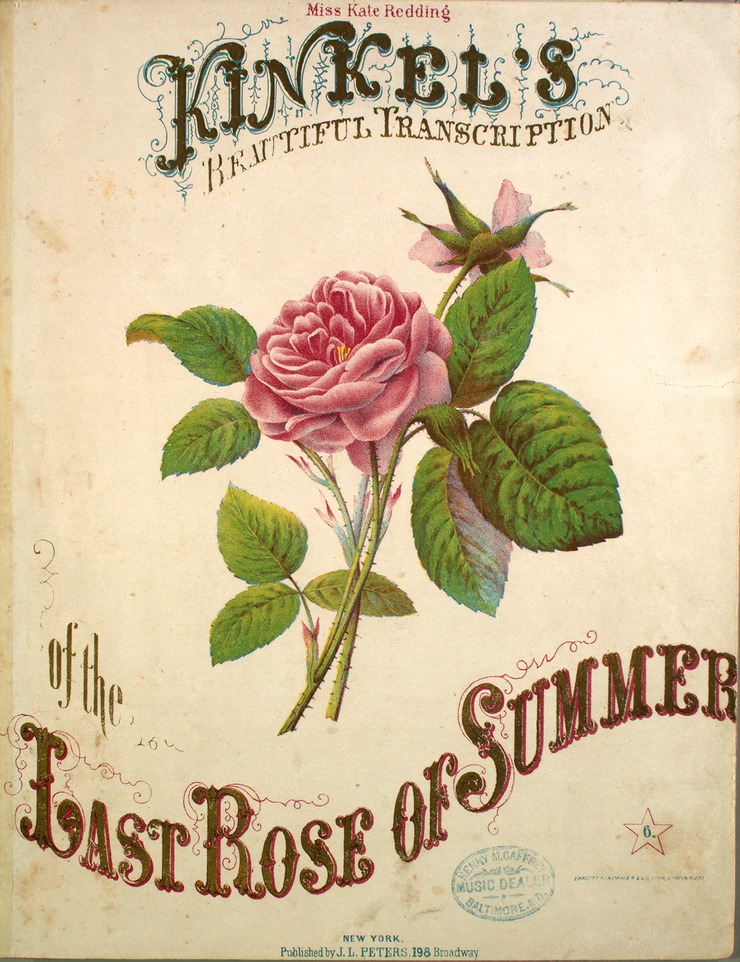
Postage Stamps of the United States - 1901
Politics

President Jan. 1- Sep. 4
William McKinley
Sep. 4 - Dec. 31
Theodore Roosevelt

Postmaster General
Charles Emory Smith
Music

Click Control Above To Hear
1901 "The Last Rose Of Summer"
Postage Rate
Domestic Letter Rate: 2¢ per oz.
Card Rate: 1¢
Registry Fee: 8¢
Foreign Rate: 5¢
Stamps
The Pan-American Exposition Issue - World's Fair - Buffalo, New York
Flat Plate - 200 Subject Plates - Double-line Watermark - Perf 12 - Designer : R. Ostrander Smith
Engravers
Vignette: 1¢ - G.F.C. Smillie 2¢-10¢ - Marcus Baldwin and Lyman F. Ellis
Frame: 1¢ - Robert Ponickau 2¢-10¢ - Marcus Baldwin and Lyman F. Ellis
Lettering and Numerals: Lyman F. Ellis

1¢ Fast Lake Navigation

2¢ Fast Express

4¢ Automobile

5¢ Bridge at Niagara Falls

8¢ Canal Locks - Sault de Ste. Marie

10¢ Fast Ocean Navigation
The Pan-American Exposition Stamps of 1901
As with the Columbian and Trans-Mississippi Exposition stamps that preceded them and as with many of the "commemorative" sets issued in the following decades, the Pan-American stamps were issued to promote an exposition, not to commemorate anything. The term "commemorative" is somewhat misleading, most of our early commemorative stamps may just as well be referred to as promotional stamps.
To get around the law prohibiting the use of advertisements on U.S. postage stamps, "Commemorative Series, 1901" was placed on each stamp, rather than the name of the exposition itself. The inability to advertise directly, in part, gave rise to a variety of Pan-American Exposition cancellations promoting and providing souvenirs for the event. Many of the cancellations and covers bearing these cancellations are very collectible today.
The designs of the frames of the Pan-American stamps are quite large in comparison to the size of the stamps themselves and well-centered copies bring quite a premium. Straight-edges may occur at either the top or bottom of the stamps and care must be taken to insure that the stamp has not been reperforated to make a fully perforated well-centered stamp. Fortunately, there were no straight-edges at left or right, but even then the stamp may have been reperforated to hide a flaw, the point being that special care must be taken when examining a well-centered Pan-American stamp, particularly at top and bottom.
It is interesting to note that no less than half the stamps have "FAST" in the title and a fourth, has "AUTOMOBILE", although not yet reaching the distinction of being "fast", all signifying the role that increased speed would play in the delivery of goods driving the burgeoning economy. Opening in Buffalo, New York on May 1, 1901, the Pan American Exposition and World's Fair high-lighted technical achievement and the role it would play in America's future as the twentieth century began.
The 1¢ Fast Lake Navigation
The one cent stamp portrays the steamship "City of Alpena" which operated along the Great Lakes. The stamp was printed in two steps, first the vignette, the illustration of the steamship, was printed in black and then the frame surrounding it was printed in green. Since it was difficult for the printer to place the sheets in exactly the correct position for the frame to be printed perfectly centered, some misregistration was to be expected. In fact, the ship may appear nearly anywhere in the frame, leading to highly collectible items such as "fast", "slow" and "sinking" ship varieties. But the most collectible variety is the one in which the frame was actually printed upside down! These are known to collectors as "inverted centers" and are highly sought after.
The 2¢ Fast Express
The two cent stamp portrays the "Empire State Express" out of the New York Central and Hudson River Railroads. Politics played a key role in the choice of the design, honoring a New York commercial venture. As with the one cent stamp, misregistration of the vignette was widespread, in fact more so on the two cent than on any others of the series. Shifts with the train well into the frame are known; "Fast" and "Slow" train varieties are very popular among collectors. Inverts are known, but are much rarer than the one cent inverts.
The 4¢ Automobile
The four cent stamp portrays an electric automobile, or more appropriately an "Electric Vehicle Service" as illustrated in the turn of the century Baltimore and Ohio Railroad flyer from which the engraving of the stamp was based, complete with Capitol Dome in the background. There has been some debate as to whether this stamp was the first U.S. stamp to depict a living person. It is argued that the 2¢ Trans-Mississippi stamp holds that distinction and there is merit in Gary Griffith's argument that the two men depicted in the "front" seat are both chauffeurs and that the man in the passenger compartment is actually the first living man depicted on a U.S. stamp - Samuel P. Hege.
Misregistration of the vignette was not as widespread on this stamp as on the 1¢ and 2¢ stamps. Inverts are known, but are the result of deliberate manipulation, not the result of error as were the one cent and two cent inverts. Still, this has not diminished the desirability of the contrived four cent invert, it actually brings a higher premium than the one cent invert, and is nearly equal in desirability to the non-philatelic two cent invert.
The 5¢ Bridge at Niagara Falls
The five cent stamp portrays what was then the largest single span steel bridge in the world, traversing the Niagara Falls. If you look closely you can see two trolley cars crossing the bridge linking the U.S. and Canada. Niagara Falls was of course an integral part of the World's Fair in Buffalo, and the hydroelectric power that it delivered turned on the spectacular "City of Lights", the most breath-taking display of electric light to date, and certainly one of the highlights of the Fair.
Five cents was the rate that paid the foreign destination fee for first class mail. Covers with an Exposition cancellation bring substantial premiums.
The 8¢ Canal Locks at Sault de Ste. Marie
The eight cent stamp portrays the canal locks at Sault de Ste. Marie. As with the "Bridge at Niagara Falls" stamp, this stamp illustrates a spirit of international co-operation, with the sister cities Sault Sainte Marie, Michigan and Sault Sainte Marie, Ontario sharing the honors. The locks were a great engineering feat and did much to promote commerce in the Midwest, providing navigational links between Lake Superior and Lake Huron and therefore the rest of the Great Lakes and the Atlantic Ocean.
Eight cents paid the registered letter fee in 1901, and most covers bearing this stamp are joined by a 2¢ stamp, paying both the letter and registry fee.
The 10¢ Fast Ocean Navigation
The ten cent stamp portrays the American Liner steamship, St. Paul, with a touch of artistic license. The St. Paul's claim to fame was that it was the first commercial ship to be commissioned as a warship during the Spanish-American War, still fresh in the minds of the designers of this series.
Ten cents paid the letter and registry fee in 1901, and solo usage is common for covers bearing this stamp, although the covers themselves are not at all common.
The following postage stamp varieties were first issued by the U.S. in 1901:
No new major varieties of regular issue U.S. postage stamps were issued in 1901
No new varieties of U.S. Special Delivery stamps were issued in 1901
No new varieties of U.S. Postage Due stamps were issued in 1901
Commemoratives:
Number 294 - 1¢ Fast Lake Navigation - 91,401,500 issued - First Day: May 1, 1901
Number 295 - 2¢ Fast Express - 209,759,700 issued - First Day: May 1, 1901
Number 296 - 4¢ Automobile - 5,737,100 issued - First Day: May 1, 1901
Number 297 - 5¢ The Bridge at Niagara Falls - 7,201,300 issued - First Day: May 1, 1901
Number 298 - 8¢ The Canal Locks at Sault de Ste. Marie - 4,921,700 issued - First Day: May 1, 1901
Number 299 - 10¢ Fast Ocean Navigation - 5,043,700 issued - First Day: May 1, 1901





